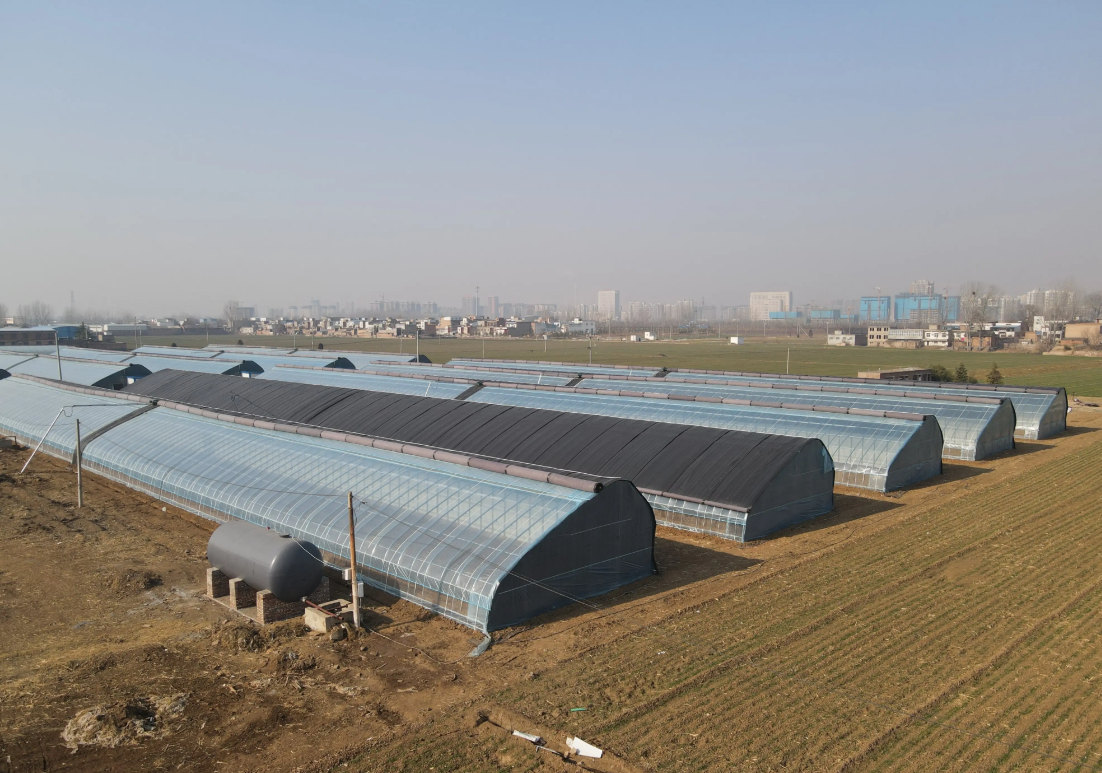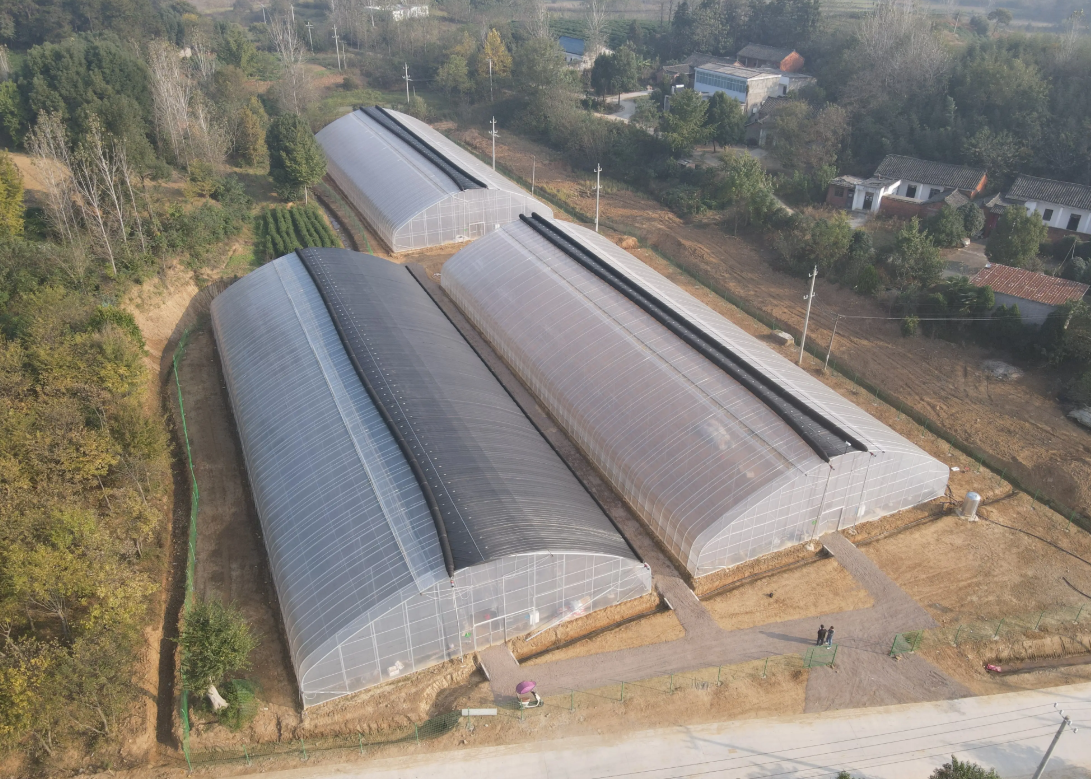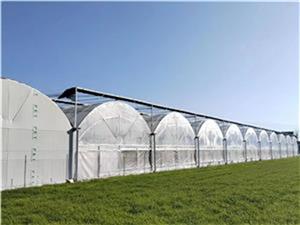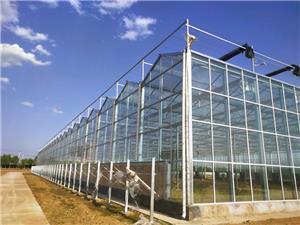What Exactly is a Greenhouse?
In our daily lives and in the scientific realm, the term "greenhouse" is quite familiar. A agricultural greenhouse , at its most basic, is a building specifically designed for growing plants. It's usually constructed with transparent materials such as glass or plastic. This transparency allows sunlight to penetrate into the interior of the agricultural greenhouse. Once inside, the sunlight's energy is absorbed by the plants, soil, and other objects within. As these items heat up, they radiate heat back out, but the glass or plastic walls and roof trap this heat, creating a warmer environment compared to the outside. This trapped - heat phenomenon is similar to how a car's interior heats up when it's parked in the sun with the windows rolled up.
For example, in many gardens, you might see small, simple commercial greenhouses made of plastic sheets stretched over a metal or wooden frame. These are used by hobby gardeners to start seedlings early in the spring, protecting them from the cold outside temperatures. On a larger scale, commercial greenhouses can span acres. commercial greenhouses are used by farmers to grow a wide variety of crops like tomatoes, cucumbers, and flowers year - round, regardless of the external climate conditions.
Structure and Function
The typical structure of a greenhouse consists of a sturdy framework, agricultural greenhouseagricultural greenhouse which can be made from materials like metal (such as galvanized steel), wood, or aluminum. This framework provides support for the entire structure, commercial greenhouseensuring it can withstand various weather conditions, including wind, rain, and snow.
Covering this framework are the transparent elements - the walls and the roof. As mentioned before, these are usually constructed from glass or plastic. Glass offers high light transmittance, clarity, commercial greenhousesand durability. It allows plants to receive an abundance of sunlight, which is crucial for photosynthesis. However, glass is relatively heavy and more expensive, and it can be easily broken. On the other hand, plastic, such as polyethylene (PE) or polycarbonate, is a popular alternative. Plastic is lightweight, cost - effective, and easy to install. For example, low - density polyethylene (LDPE) films are commonly used in small - scale and hobbyist greenhouses due to their affordability. Polycarbonate sheets, which are more durable and have better insulation properties, commercial greenhouses are often chosen for commercial greenhouses and large - scale greenhouse projects.
The primary agricultural greenhouse function of a agricultural greenhouse is to create a controlled environment for plant growth. Sunlight enters the greenhouse through the transparent walls and roof. The plants inside the greenhouse absorb the sunlight for photosynthesis, a process where they convert light energy into chemical energy to produce food (in the form of sugars) and release oxygen. As the sunlight agricultural greenhousehits the plants, soil, and other surfaces within the greenhouse, commercial greenhouses these objects heat up. The heat radiated from these warm surfaces is in the form of infrared radiation. Since glass and plastic are relatively opaque to infrared radiation, they trap this heat inside the agricultural greenhouse, creating a warmer environment than the outside. This is known as the agricultural greenhouse effect.
For instance, during the winter months in temperate regions, while the outside temperatures might drop well below freezing, the inside of a properly functioning commercial greenhouse can maintain temperatures that are suitable for plant growth, often between 15 - 25°C (59 - 77°F), depending on the type of plants being cultivated. This temperature control also helps in protecting plants from extreme weather conditions such as frost, heavy rain, and strong winds, which could otherwise commercial greenhouses damage or kill them.
Moreover, commercial greenhouse also help in controlling humidity levels. As plants transpire (release water vapor), the enclosed space of the commercial greenhouse allows the humidity to build up. This higher humidity can be beneficial for many plants, especially those that thrive in moist conditions, like tropical plants. Some commercial greenhouse are commercial greenhouses also equipped with ventilation systems, such as vents, fans, or louvers. These systems can be opened or activated to regulate the temperature and humidity by allowing fresh air to enter and stale air to exit. For example, on a hot summer day, opening the vents can prevent the commercial greenhouse from overheating, while in more humid conditions,agricultural greenhouse running the fans can help commercial greenhouses in reducing excess moisture.
Climate change also brings about more extreme weather events. Heatwaves become more frequent and intense, putting human health at risk, especially for the agricultural greenhouse elderly and those with pre - existing medical conditions. Droughts can occur in some regions, affecting agriculture and water supplies, while heavy rainfall and flooding become more common in other commercial greenhouses. Changes in temperature and precipitation patterns also disrupt ecosystems, leading to the agricultural greenhouse displacement or extinction of many plant and animal species.
Role in Agriculture
Greenhouses play an indispensable role in modern agriculture, revolutionizing the way we grow crops and manage food production. In traditional open - field farming, crop growth is heavily dependent on the natural climate, including temperature, sunlight, rainfall, and soil conditions. However, greenhouses provide a solution to overcome many of these limitations, enabling farmers to have greater control over the growing environment of their plants.
One of the most significant advantages of agricultural greenhouse in agriculture is the ability to facilitate year - round crop cultivation. In regions with harsh winters or extreme climates, outdoor farming may only be possible during a limited growing season. For example, in northern Europe or Canada, the cold winter months make it impossible to grow many warm - season crops like tomatoes, peppers, and cucumbers outdoors. But with the use of greenhouses, these crops can be grown throughout agricultural greenhouse the year. The controlled temperature inside the greenhouse ensures that plants are not exposed to freezing temperatures, allowing them to thrive even when the outside environment is inhospitable. This year - round cultivation not only increases the availability of fresh produce in the market but also provides a more stable income source for farmers.
Greenhouses also contribute to increased crop yields. commercial greenhouse By providing a stable and optimal environment, plants can grow more efficiently. The controlled temperature, humidity, and light conditions in a greenhouse allow plants to photosynthesize more effectively. For instance, the ability to adjust the amount of sunlight entering the greenhouse using shading systems commercial greenhouse or artificial lighting (in the case of low - light periods) ensures that plants receive the right amount of light energy for photosynthesis. This can lead to faster growth rates and higher yields compared to open - field cultivation. Research has shown agricultural greenhouse that some greenhouse - grown crops can yield up to two to three times more than their outdoor - grown counterparts.
Moreover, the quality of crops grown in greenhouses is often superior. The protection from external elements such as pests, diseases, and adverse weather conditions means that plants are less likely to be damaged. In open - field farming, pests like insects, birds, agricultural greenhouse and rodents can cause significant damage to crops, reducing both the quantity and quality of the harvest. In a greenhouse, physical barriers like screens and netting can be installed to keep out pests, and the controlled environment also makes it easier to manage and prevent the spread of diseases. This results in crops that are healthier, have a longer shelf - life, and are more visually appealing, making them more marketable.

Solar Greenhouse(日光温室):Also known as a passive solar greenhouse, it is a type of greenhouse that is designed to maximize the use of solar energy for solar greenhouse heating. These greenhouses are typically oriented to face the solar greenhouse sun, usually south - facing in the Northern Hemisphere and north - facing in the Southern Hemisphere. They often have a large, sloping glass or plastic front - facing ssolar greenhouse urface to allow maximum sunlight penetration solar greenhouse. The structure also includes features for heat retention, such as thick walls (which can be made of materials like brick, stone, or earth) that absorb and store heat during the day and release it at night. Solar greenhouses are popular in regions with cold winters as they can maintain relatively warm temperatures inside without the need for excessive artificial heating, making them an energy - efficient option for solar greenhouse growing plants year - round.
Conclusion
In summary, the term "greenhouse" encompasses multiple but related concepts. At a basic level, a greenhouse is a physical structure made of transparent materials like glass or plastic that creates a favorable environment for plant growth by trapping heat, protecting plants from external elements, and allowing for the control of various environmental factors such as temperature, humidity, and light. This simple yet ingenious construction has revolutionized agriculture, enabling year - round crop cultivation, higher yields, and better - quality produce, while also expanding the possibilities of growing crops in areas with challenging natural conditions.
On a global scale, the greenhouse effect, which shares the same heat - trapping principle as a physical greenhouse, is a natural process essential for maintaining the Earth's temperature within a habitable range. However, human - induced increases in greenhouse gas emissions have led to an enhanced greenhouse effect, resulting in global warming and significant climate change. Understanding this environmental aspect of the "greenhouse" concept is crucial for addressing the pressing global challenges of climate change and its far - reaching consequences for ecosystems, weather patterns, sea levels, and human society.
Whether in the context of agricultural innovation, environmental science, or global climate change, the concept of the greenhouse remains central. It serves as a symbol of both the potential for human - made solutions to support plant growth and food production, as well as the need for responsible management to prevent the over - accumulation of greenhouse gases and safeguard the planet's climate balance.







